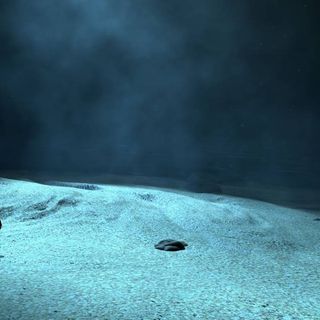Scientists recently discovered the “unmistakable signature” of osteosarcoma — the most common type of bone cancer in humans — in a 76-million-year-old dinosaur.
Published this week in Lancet Oncology, the study of the fossilized bone was conducted by a team of experts in paleontology, pathology, orthopedic, radiology, and engineering. Unearthed in Canada in 1989, the bone belongs to a horned dinosaur called Centrosaurus, and the malformations observed were initially misdiagnosed as a healing fracture. Employing modern-day medical techniques, the researchers performed a more detailed analysis in the study, leading them to conclude that it was osteosarcoma.
To further confirm this diagnosis, the researchers compared the fossil to the fibula of another dinosaur belonging to the same species as well as to the fibula of a 19-year-old man with osteosarcoma. “Diagnosis of aggressive cancer like this in dinosaurs has been elusive and requires medical expertise and multiple levels of analysis to properly identify,” Dr. Mark Crowther, a professor of pathology and molecular medicine, who co-authored the study, said.
“It is both fascinating and inspiring to see a similar multidisciplinary effort that we use in diagnosing and treating osteosarcoma in our patients leading to the first diagnosis of osteosarcoma in a dinosaur. This discovery reminds us of the common biological links throughout the animal kingdom,” Dr. Seper Ekhtiari, orthopedic surgery resident and co-author of the study, noted.
Related on The Swaddle:
Fossil Footprints Found In South Korea Show Ancient Crocodile May Have Run on Two Legs
“Malignancies, including bone cancers, are rooted quite deeply in the evolutionary history of organisms,” the study noted, adding, “a similarly advanced osteosarcoma in a human patient, left untreated, would certainly be fatal.” This cancer is believed to spread rapidly through the bone to to other organs, and most commonly, to lungs.
In the case of the dinosaur, even though the specimen demonstrates an advanced stage of cancer, scientists have no evidence to suggest that the dinosaur’s death was caused by the cancer. Because the bone was found in a massive bone bed, the researchers believe it died as part of a herd that was struck down by floods.
“The shin bone shows aggressive cancer at an advanced stage. The cancer would have had crippling effects on the individual and made it very vulnerable to the formidable tyrannosaur predators of the time. The fact that this plant-eating dinosaur lived in a large, protective herd may have allowed it to survive longer than it normally would have with such a devastating disease,” Dr. David Evans, paleontologist and co-author of the study, said.
Experts believe that gaining deeper insights into diseases that afflicted pre-historic animals, and continue to exist to this day, may help us understand the evolution and genetics of disease better.




